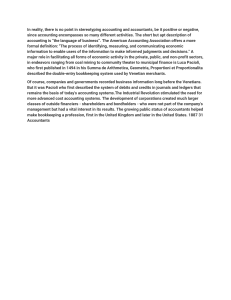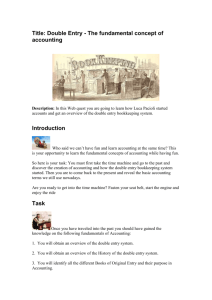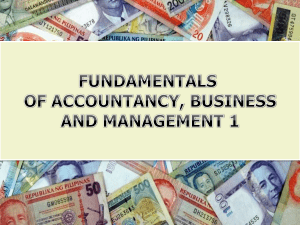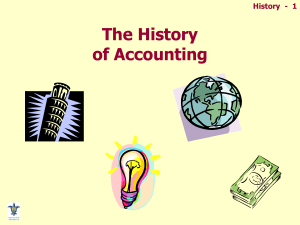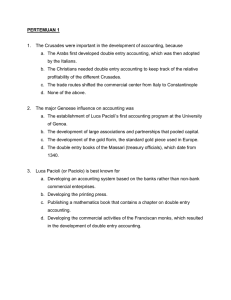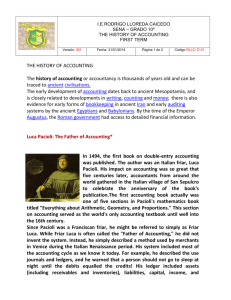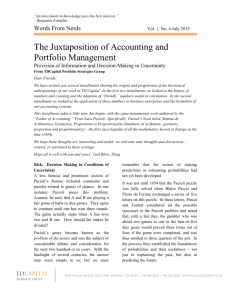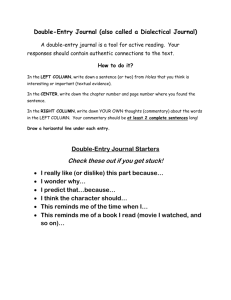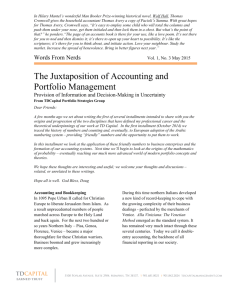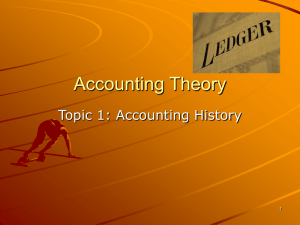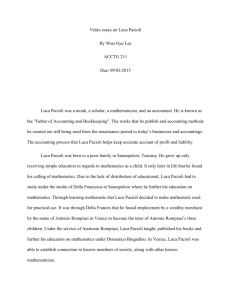The 'father' of accounting
advertisement
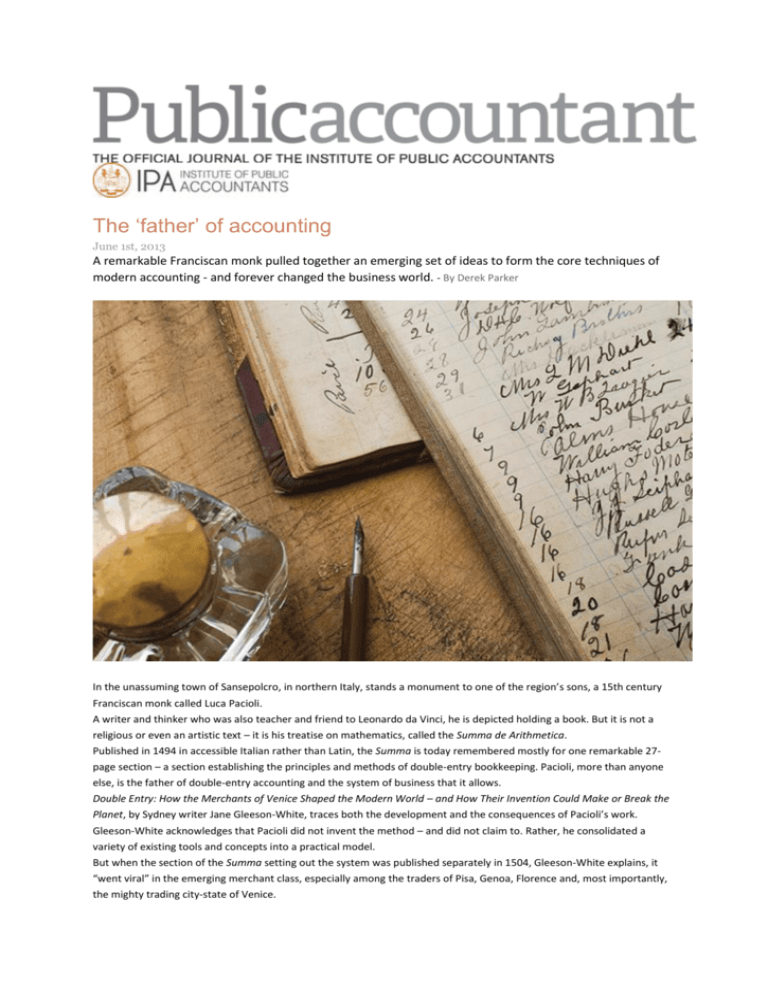
The ‘father’ of accounting June 1st, 2013 A remarkable Franciscan monk pulled together an emerging set of ideas to form the core techniques of modern accounting - and forever changed the business world. - By Derek Parker In the unassuming town of Sansepolcro, in northern Italy, stands a monument to one of the region’s sons, a 15th century Franciscan monk called Luca Pacioli. A writer and thinker who was also teacher and friend to Leonardo da Vinci, he is depicted holding a book. But it is not a religious or even an artistic text – it is his treatise on mathematics, called the Summa de Arithmetica. Published in 1494 in accessible Italian rather than Latin, the Summa is today remembered mostly for one remarkable 27page section – a section establishing the principles and methods of double-entry bookkeeping. Pacioli, more than anyone else, is the father of double-entry accounting and the system of business that it allows. Double Entry: How the Merchants of Venice Shaped the Modern World – and How Their Invention Could Make or Break the Planet, by Sydney writer Jane Gleeson-White, traces both the development and the consequences of Pacioli’s work. Gleeson-White acknowledges that Pacioli did not invent the method – and did not claim to. Rather, he consolidated a variety of existing tools and concepts into a practical model. But when the section of the Summa setting out the system was published separately in 1504, Gleeson-White explains, it “went viral” in the emerging merchant class, especially among the traders of Pisa, Genoa, Florence and, most importantly, the mighty trading city-state of Venice. It was the right thing at the right time. The clumsy technology of Roman numerals was being replaced by the Arabic system, including the new concept of the zero. This was critical, the pivot of Pacioli’s method of balancing assets and liabilities, debits and credits. Without the zero, accounting is just, well, counting. But the double-entry system was also a revolution in thinking. It provided a basis for objectivity and comparison rather than guesses and opinion. As much as anything else, Pacioli invented the idea of the fact. And yet he was far from a hard-headed materialist. He advised those using double entry to incorporate explicit signs of religious faith into their work and saw the method as a reflection of divine order. But before long, the system took on a life of its own and developed a quasi-scientific tone, divorced from and even antagonistic to matters that could not be quantified, measured and managed. Gleeson-White accepts that double-entry bookkeeping brought huge benefits, not least the financing of the Renaissance and a jump in material prosperity. It also underwrote the drift in political power from the aristocracy to the merchant classes. She traces the system through history to the Industrial Revolution, the creation of the limited stock company and the rise of the corporation. She also examines the adaptation of the method to the accounts of countries, creating the notions of GDP, national debt and regular budgets. But there has always been a downside, says Gleeson-White. No sooner was the system created than people began to look for ways to manipulate it for dishonest ends, and that problem has remained up to the days of Enron and the GFC. Tags: Magazine Jun/Jul 2013 - See more at: http://pubacct.org.au/the-father-of-accounting/#sthash.HQg1Aqrg.dpuf
